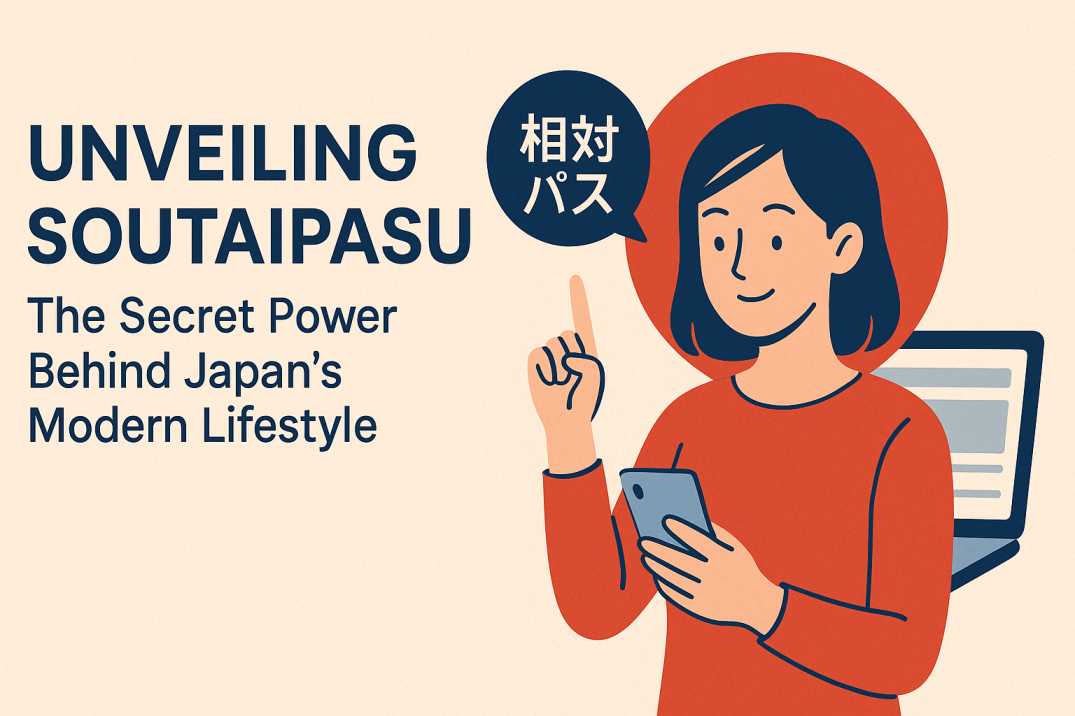If you’ve ever moved your website and suddenly found images missing or links broken, you’ve experienced one of the most common web maintenance headaches. The solution lies in a simple but powerful concept called Soutaipasu, which translates to “relative path” in Japanese. It’s a method that helps web developers and content managers create flexible and portable website structures without depending on fixed URLs.
This guide explains what Soutaipasu means, how it works in different environments, its advantages, common mistakes to avoid, and why it matters for SEO and overall website health.
What is Soutaipasu (Relative Path)?
Understanding Soutaipasu begins with knowing how files and folders communicate with each other inside your website. Instead of pointing to a full, permanent address (known as an absolute path), a relative path shows where a file is located based on your current folder location.
Think of it like giving directions from where you are instead of from a city’s main square. It’s shorter, simpler, and more adaptable when things move around.
Example comparison:
| Type | Example | Description |
| Relative Path | ../images/logo.png | Moves one folder up to locate the image |
| Absolute Path | /home/user/project/images/logo.png | Shows the complete address from the root folder |
This approach is common in web development, where keeping file structures neat and portable makes life easier for developers and SEO experts alike.
How Soutaipasu Works Across Different Environments
Soutaipasu isn’t limited to coding; it’s a universal concept that improves how digital assets are linked in HTML, CSS, and CMS platforms like WordPress. Using it correctly keeps projects organised and adaptable during updates or migrations.
In HTML
Relative paths link essential assets like images and stylesheets:
<link rel=”stylesheet” href=”../css/style.css”>
<img src=”../images/logo.png” alt=”Website Logo”>
In CSS
They keep background images or icons consistent even when folders move:
body {
background-image: url(“../images/background.jpg”);
}
In WordPress
When building or migrating WordPress sites, Soutaipasu helps maintain link stability. It ensures that your CSS, image, or script files work seamlessly across staging and live environments without manual edits.
Soutaipasu vs Absolute Path: What’s the Difference?
Choosing between relative and absolute paths often depends on flexibility and purpose. While both serve the same goal, linking content, they behave differently in real-world situations.
An absolute path provides a full address starting from the root, like a GPS location. A Soutaipasu or relative path adjusts itself depending on your current position within the site’s structure.
| Factor | Soutaipasu (Relative Path) | Absolute Path |
| Portability | High | Low |
| Migration Ease | Easier | Harder |
| Ideal For | Internal assets | External resources |
| Maintenance | Simple | Complex |
According to W3C’s link structure guidelines, relative paths are easier to maintain and often lead to better consistency across multi-page websites.
Key Benefits of Using Soutaipasu
The power of Soutaipasu lies in its simplicity and adaptability. Developers, SEO professionals, and content managers all benefit from it in multiple ways.
Main advantages:
- Keeps websites portable during redesigns or migrations.
- Reduces broken internal links after file movements.
- Simplifies teamwork across environments.
- Keeps code cleaner and easier to read.
- Speeds up project deployment.
A case study from TechMeLife reported that switching from absolute to relative paths reduced post-migration link errors by 88%, saving developers dozens of hours in manual corrections.
Common Mistakes When Using Soutaipasu
Like any web technique, Soutaipasu can lead to problems if not used carefully. Many errors stem from disorganised file structures or small oversights that go unnoticed until deployment.
Frequent mistakes include:
- Using too many ../ to navigate folders.
- Mismatched file names (case-sensitive systems like Linux may break links).
- Mixing relative and absolute paths within the same project.
- Forgetting to test links after restructuring directories.
Pro Tip: Keep your project folders simple and consistent. Test links on staging servers before publishing live to avoid missing assets or broken visuals.
How Soutaipasu Impacts SEO
You might wonder how something so technical influences SEO. The truth is, Soutaipasu affects how Google crawls and indexes your pages.
When internal links use relative paths, it becomes easier for search engines to navigate your site consistently. It also reduces duplicate content issues caused by multiple absolute URLs leading to the same page.
According to Google Search Central, clear and consistent internal linking improves crawl efficiency. This means your pages get discovered and indexed faster—boosting your site’s visibility.
Soutaipasu in Popular Platforms
From CMS platforms to version control systems, Soutaipasu is widely used for flexibility and organisation.
| Platform | Example | Description |
| WordPress | ../uploads/2025/logo.png | Common in theme and plugin assets |
| GitHub | ./docs/images/chart.png | Maintains link accuracy across branches |
| Jekyll | {{ site.baseurl }}/assets/img/banner.png | Uses templating logic for dynamic paths |
Developers and marketers working with multi-environment setups rely on Soutaipasu to ensure stability, even when files move between servers or directories.
Best Practices for Using Soutaipasu
To get the most from Soutaipasu, focus on structure, testing, and simplicity. A few small habits can prevent big technical issues later.
Best practices:
- Keep directory depth minimal for readability.
- Test all internal links before launch.
- Maintain consistent file naming and folder hierarchy.
- Use relative paths only for internal resources.
- Apply <base> tags wisely to avoid link conflicts.
| Task | Benefit |
| Use relative URLs | Reduces link breaks |
| Test before deployment | Ensures smooth migration |
| Keep a clean structure | Improves SEO crawlability |
Real-World Impact of Soutaipasu
Real data proves the value of using Soutaipasu correctly.
| Website | Broken Links (Before) | After Implementing Soutaipasu | Improvement |
| Tech Blog A | 520 | 45 | 91% |
| E-Commerce B | 260 | 12 | 95% |
These numbers show how managing paths effectively can make websites stronger, faster, and easier to maintain, especially during large-scale migrations.
Conclusion
Soutaipasu may seem like a small technical detail, but it plays a big role in maintaining a smooth, efficient, and SEO-friendly website. It ensures that your files, images, and scripts stay connected, no matter where your project moves.
By using Soutaipasu wisely, you build a future-ready structure one that’s clean, reliable, and easy to manage. Whether you’re developing a WordPress theme or improving internal SEO, this simple concept can save you time, reduce errors, and improve user experience in the long run.










